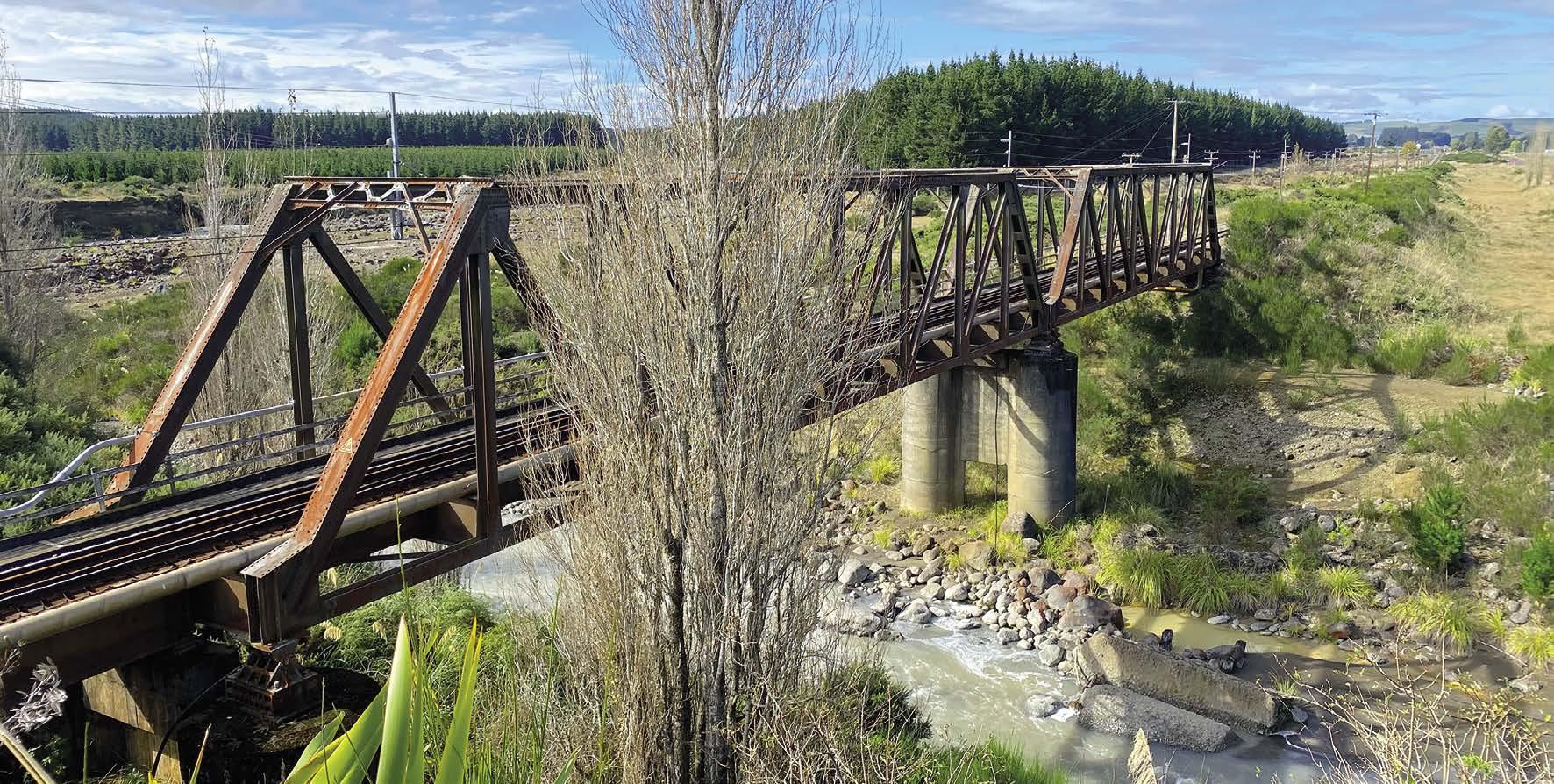
3 minute read
ROSS THORBY: TANGI - WAI NOUN
ROSS THORBY: TANGI - WAI NOUN: TO CRY OR WEEP - WEEPING WATER
So, home from Fiji, it was time to warm up Car-lotta and hit the road south again towards the central plateau - home of the volcanos and also the site of one of our more tragic transport disasters.
It’s not that I’m morbid you understand, but I’ve wanted to return to this particular spot to pay my respects and explore further since travelling through this site for only a few brief seconds on the Northern Express Train earlier in the year. This was also to be my lesson in living, breathing New Zealand history, and besides, what better way to explore a little of our past but from the cosiness of a camper-van sporting all the comforts of home.
Picture it - Christmas Eve, 1953, Sir Edmund Hillary had conquered Everest, the Queen was in Auckland on her Coronation tour of New Zealand and the 3pm Express train from Wellington to Auckland was well into her journey north.
Meanwhile on the Volcanic Plateau, immense pressure was building inside the Tephra dam at the top of Mount Ruapehu. Having erupted as recently as 1945, it was no longer being monitored. Few realised or appreciated the danger from the lake and the pressure on the unstable walls of its cone.
At 8pm the walls collapsed and a six meter high wave of debris and river ice cascaded down the slopes at an estimated speed of 140kmh, scouring out the river-bank and trees as it twisted and turned; gaining increasing momentum down towards the bridges at the mountain’s foot. The lahar hurtled itself at the railway crossing’s supports, taking out the central span and weakening what structure was left then submerging the vehicle bridge further downstream. The steel tracks of the railway bridge were left suspended in mid air and the road bridge completely buried in a flood of debris.
Minutes later the engineer of the approaching train saw the danger ahead and applied the brakes just as the bridge’s tracks collapsed under the engine’s weight, nose-diving it and the first carriage out over the void towards the far bank. The following three carriages plunged into the swollen current and a further carriage was left dangling over the edge, eventually disentangling itself and plunging into the seething river below. Of the 285 souls onboard, 151 died in New Zealand’s worst railway accident; most passengers drowning in the muddy lahar which continued its fearsome path downstream. Just off State Highway 49, between Tangiwai and Waiouru, stands the memorial to the Tangiwai Disaster, a tribute to not only the victims, but the incredible bravery of the rescuers who worked tirelessly in the muddy aftermath.
It was packed the day Car-lotta and I arrived. Setting up a day-camp in the grounds of the site, I was joined by a number of other like-minded travellers and tourists, history buffs and the merely curious, who were soaking up the atmosphere of the park. The mournful cry of the wind through the macrocarpa trees and the gentle bubbling sound of the river threading its way through the valley seemed incongruous, knowing the fury of that night - here in this now quiet, peaceful backwater of New Zealand.
Amongst the birdsong and crickets are some restored parts of the train chassis, picture story-boards and a consecrated memorial that make this a well worthwhile stop and a restful picnic-spot beside the calming river.
The original road leads through the park up to a point on the riverbank that ominously falls away to the stream below. Its original asphalt, still obvious, seemingly awaiting the next traffic flow that will never come, and to its left, upriver, there is a new railway bridge. The gentle current below now only meanders and tickles around its supports.
After the tragedy, an early warning system was installed which successfully detected a lahar of similar magnitude in 2007. The system worked as planned and train and motorists were stopped before the lahar hit the bridges; this time, successfully standing up to the onslaught. We treat our mighty mountains with just a little more respect now.
A walking track leads up through the forest to a lookout where I stood on the hill above the new crossing and imagined the horrific sight that night as “man-made met nature’s mighty fury”. Poignantly, just as I turned to walk back, a train crossed the bridge. It could not have been a more thought-provoking moment considering what happened here 69 years ago, and with that, I knew it was time to move on. (ROSS THORBY) PN










